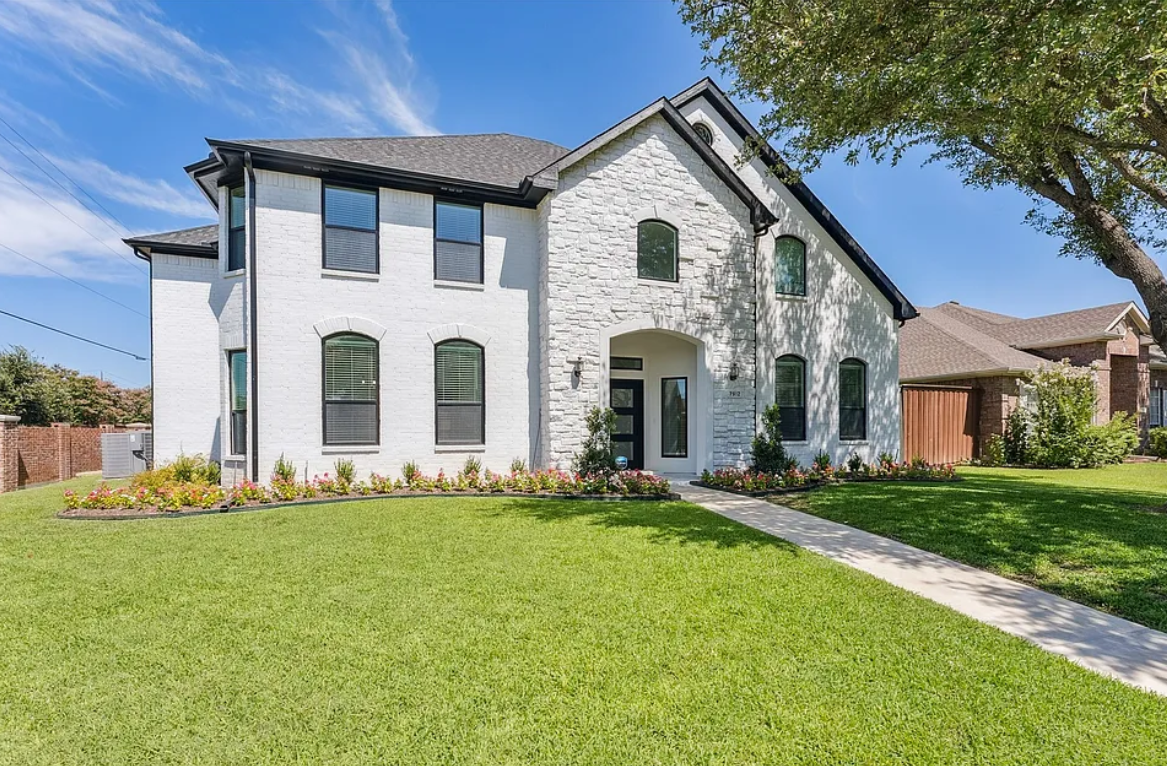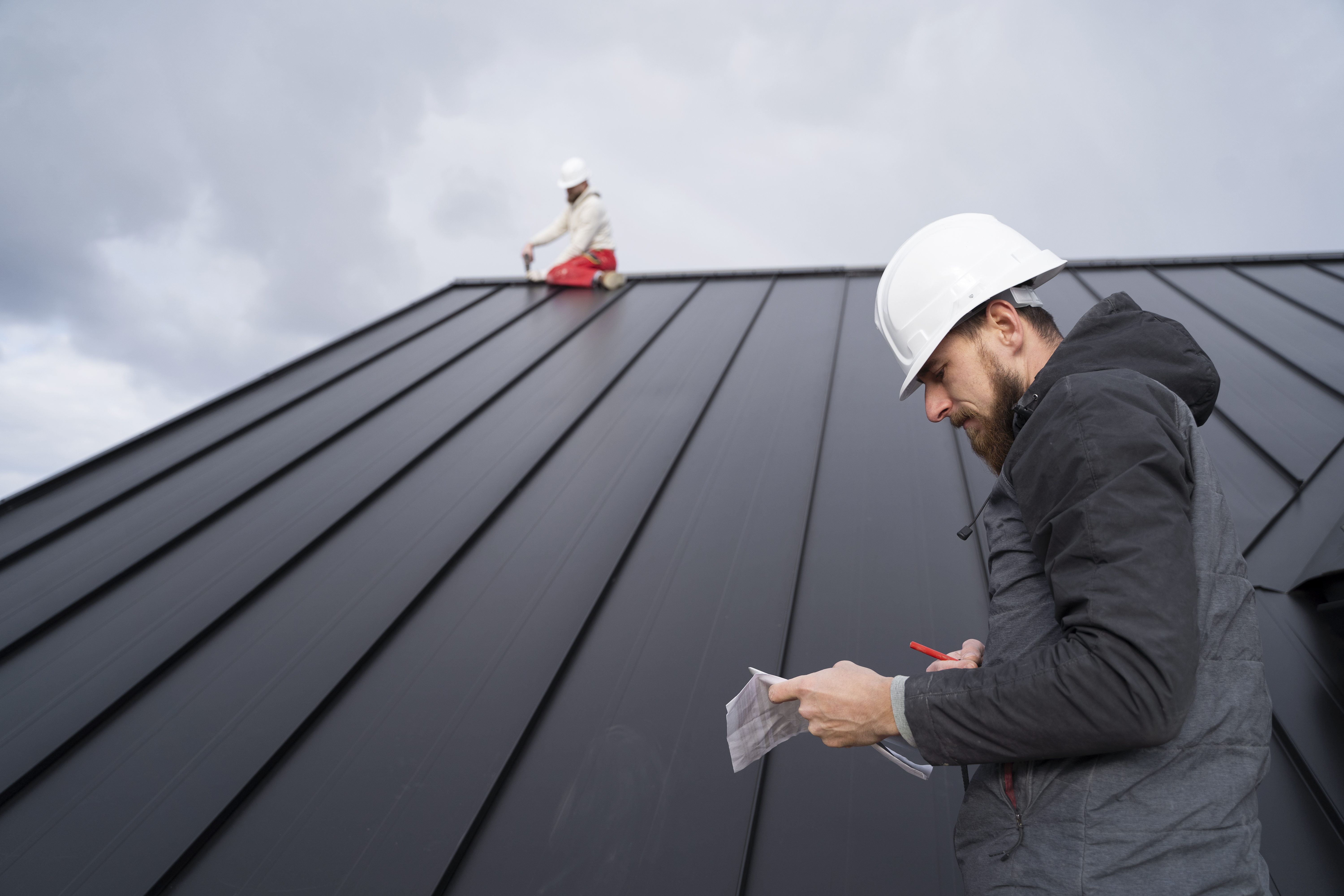For commercial buildings, there’s more to roofing than simply keeping the rain out. It affects energy efficiency, long-term maintenance costs, durability, and even your insurance premiums. But most homeowners don’t know what kind of roof they have or how much it matters. Knowing what kind of commercial roof you have is the first step in deciding on repairs, a new roof, or just a maintenance plan.
In this blog, we take you through the types of commercial roofs you’ll spot, how to identify them in Lancaster, and why understanding your roof type is key to preserving your investment. Read more below.
Why Understanding Your Commercial Roof Matters in Lancaster
Before diving into the human identification techniques, let’s find out why it is useful to know your roof type:
1. Maintenance Requirements Vary
Every type of roofing material and product has its specific maintenance requirements. For instance, a TPO roof may need membrane seam checks, but a metal roof is going to need rust and fastener checks periodically. It also helps with scheduling maintenance properly to know your type.
2. Cost and Lifespan Planning
Certain types of roofs, such as metal or modified bitumen, have higher initial costs but longer lifespans, while some, like tar and gravel, are more cost-effective but may need to be replaced sooner. Knowing what you have helps you to spend capital wisely.
3. Repair Compatibility
With a leak or storm damage, applying the wrong materials or doing the wrong repairs can do further damage. It is important for identification, to enable the right repair procedures.
4. Energy Efficiency Goals
Some types of roofing - such as white reflective membranes, provide improved thermal performance. Understanding your roof will allow you to assess your building’s energy efficiency and potential upgrades.
5. Insurance and Compliance
Some roofs are more fireproof or they’re up to a particular building code. Knowing what type of procrastinator you are can help you stay in compliance — and may affect how much you pay for insurance.
Also Read: Commercial Roofing Maintenance: 5 Strategies to Get the Most Out of Your Roof
Popular Types of Commercial Roof
Commercial roofs are either low-slope/flat or steep-slope systems. Let’s check out the common roof type:
1. Built-Up Roofing (BUR)
What It Is:
BUR systems are redundant, meaning if one layer fails, increasing layers will take control. The top layer is typically gravel or a cap sheet.
How to Identify:
- Gravel-like or crusty black crust on the skin.
- The base feels good to walk on because of its layered design.
- Frequently used on older buildings.
Why It Matters:
BUR is highly durable and provides good waterproofing, but it can be heavy and difficult to inspect for leaks. Maintenance includes looking for cracks in the membrane and loose gravel.
2. Modified Bitumen Roofing
What It Is:
A type of roof with multiple layers of asphalt, often with rubber or plastic added for flexibility and strength. Typically installed in rolls.
How to Identify:
- Seamed unrolled sheets.
- Usually gray, black, or white.
- Occasionally with granules, shingle-like.
Why It Matters:
Modified bitumen is simple to fix and works well in severe weather. Good seam sealing is everything. It’s also less likely to develop blisters than a BUR.
3. TPO (Thermoplastic Olefin) Roofing
What It Is:
A single-ply membrane roofing system that reflects UV rays. It is the most popular modern choice for flat roofs.
How to Identify:
- Bright white, smooth surface.
- Heat-welded seams.
- Soft touch feeling case with rubber coating.
Why It Matters:
TPO roofs are energy-efficient and budget-friendly. Claims are you really need to be CAREFUL and professional to avoid membrane punctures and that seam failure can be a problem.
4. EPDM Roofing (Ethylene Propylene Diene Monomer)
What It Is:
Flat or low-slope roofing of black or other colored synthetic rubber (excerpt).
How to Identify:
- Dark black appearance.
- Rubberlike and has a little bit of give to it.
- Laid down in large sheets, tape or glue down at seams.
Why It Matters:
EPDM roofs are long-lasting and UV stable but, because of their dark finish, can soak in heat. Over time seam failure and punctures can be a problem.
5. Polyvinyl Chloride (PVC) Roofing
What It Is:
A brand of single-ply roofing membrane similar to TPO, but with added plasticizers to make it flexible and strong.
How to Identify:
- The surface is white or very light.
- Heat-welded seams.
- Thicker, stiffer, and more rigid than TPO.
Why It Matters:
PVC roofing is very resistant to most chemicals and fires. Great for use in fast food, and commercial kitchens in restaurants or kitchens where grease and chemicals are used.
6. Metal Roofing
What It Is:
Standing seam or corrugated, sheet metal roofing is used on commercial sloped roofs.
How to Identify:
- Seamed or screw-through metal panels.
- Made often made out of steel, aluminum, or copper.
- The slope is steeper than flat roof systems.
Why It Matters:
Metal roofs are durable and recyclable, but can be noisy in the rain, and metal expansion joints can require care. They are also excellent for solar panel installation.
7. Green Roof Systems
What It Is:
A roof system designed to have plants grow on it, which sits above a water‐tigh roof cover.
How to Identify:
- Visible vegetation or garden.
- Drainage and root-resistant systems.
- Heavy and complicated over typical roofs.
Why It Matters:
Green roofs provide insulation and help manage stormwater runoff but need special maintenance. They even contribute to LEED certification and purify air.
How to Tell What Type of Commercial Roofing You Have
If you don’t know what kind of roof you have, here are a couple of ways to determine it:
1. Visual Inspection
Walk the roof (if safe) or hire a professional to visually inspect:
- Color, texture, and material
- Seams and fasteners
- Slope and drainage style
- Coating or top layer
2. Review Building Blueprints
A list of the original roof system specifications supplied by the architect or roof contractor from the previous reroofing project.
3. Ask Your Roofing Contractor
Your contractor should be able to inform you what the material is and its specifics if your roof has been repaired or replaced recently.
4. Use a Drone Inspection
A drone with high-resolution imaging offers a top-down view of large-scale commercial roofs, assisting industry pros in determining system types without requiring direct access.
5. Core Sampling
Sometimes core samples are taken where the layers and materials in the roof are to be analyzed—this is particularly helpful with BUR or modified-bitumen roofs.
How to Manage Your Commercial Roof System
Once you determine what kind of roof you have, here’s some maintenance advice:
1. Build a Roof Maintenance Schedule
Regular checkups and cleanings (every six months) help to prevent minor problems from becoming major issues.
2. Keep Detailed Records
Keep records of all maintenance and warranties. This could be useful for insurance claims and for future work.
3. Watch for Warning Signs
If you have any ponding water, open seams, tears, or flashing coming up, it needs to be repaired, regardless of the type of roof.
4. Hire Specialized Contractors
Not all roofers have the same expertise. Hire the one who specializes in the type of roof you have.
Hire a Trusted Commercial Roofing Contractor
In case you don’t know what your roof type is or you require help inspecting, contact 911 Exteriors Roofing and Construction- your trusted commercial roofer in Lancaster. Understanding your roof today could save you thousands tomorrow!
Want assistance in determining the make of your commercial roof or setting up an inspection? Get in touch with us and get the best roofing solutions to save your property.






